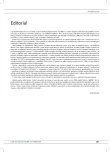Electrotactile Stimulati on of the Tongue: a New Opti on in the Rehabilitati on of Postural Stability – a Case Report
Authors:
O. Čakrt 1; P. Kolář 1; R. Černý 2; T. Funda 3; J. Jeřábek 2,3
Authors‘ workplace:
Klinika rehabilitace a tělovýchovného lékařství 2. LF UK a FN v Motole, Praha, 2Neurologická klinika dospělých 2. LF UK a FN v Motole, Praha, 3ČVUT FBMI, Společné pracoviště biomedicínského inženýrství FBMI a 1. LF UK v Praze
1
Published in:
Cesk Slov Neurol N 2009; 72/105(4): 364-367
Category:
Case Report
Overview
A completely new technique in the rehabilitati on of pati ents suffering from balance disorders is the use of bi ological feedback by way of electrotactile stimulati on – the BrainPort® system. Thanks to electrotactile stimulati on of the tongue, the pati ent is informed of the actu al positi on of his he ad. The principle part of the equipment is an accelerometer, which transmits informati on concerning changes in he ad positi ons to electrical impulses, which the pati ent feels on their tongue. The technique is predominantly used in peripheral disorders of the labyrinth where satisfactory compensati on has not been achi eved with standard processes. The technique is also promising in pati ents with central stability disorders. This paper demonstrates the promising effect of this rehabilitative appro ach in pati ents with palle ocerebellar disorders.
Key words:
biofeedback – postural balance – rehabilitation – cerebellar syndrome
Sources
1. Bach - Y - Rita P, Kercel SW. Sensory substituti on and the human - machine interface. Trends Cogn Sci 2003; 7(12): 541 – 546.
2. Danilov Y, Tyler M. Brainport: an alternative input to the brain. J Integr Ne urosci 2005; 4(4): 537 – 550.
3. Winter DA. Human balance and posture control during standing and walking. Gait Posture 1995; 3(4): 193 – 214.
4. Hamman RG, Mekjavic I, Mallinson AI, Longridge NS. Training effects during repe ated therapy sessi ons of balance training using visu al feedback. Arch Phys Med Rehabil 1992; 73(8): 738 – 744.
5. Singbartl F, Basta D, Toldt I, Seidl R, Ernst A. Elektrische und vibrotaktile Rehabilitati on von nicht - kompensi erten Vestibulopathi en. In: Scherer H (ed). Der Gleichgewichtssinn: Ne ues a us Forschung und Klinik. New York: Springer 2008 : 223 – 226.
6. Tyler M, Danilov Y, Bach - Y - Rita P. Closing an open - lo op control system: vestibular substituti on thro ugh the tongue. J Integr Ne urosci 2003; 2(2): 159 – 164.
7. Danilov YP, Tyler ME, Skinner KL, Hogle RA, Bach - Y - -Rita P. Efficacy of electrotactile vestibular substituti on in pati ents with peripheral and central vestibular loss. J Vestib Res 2007; 17(2 – 3): 119 – 130.
8. Brandt T. Vertigo: It’s multisensory syndromes. London: Springer - Verlag 1991.
9. Hlavačka F, Kundrát J, Križková M, Bačová E. Fyzi ologické rozsahy hodnôt parametrov stabilometrického vyšetreni a vzpri ameneho postoja, vyhodnocovaného počítačom. Cesk Slov Ne urol N 1990; 53/ 86(2): 107 – 113.
10. Herdman SJ. Vestibular rehabilitati on. In: Baloh RW, Halmagyi GM (eds). Disorders of the vestibular system. Oxford: Oxford University Press 1996 : 583 – 597.
Labels
Paediatric neurology Neurosurgery NeurologyArticle was published in
Czech and Slovak Neurology and Neurosurgery

2009 Issue 4
Most read in this issue
- Tumo urs of the Third Cerebral Ventricle
- Acquired Neuromyotonia with Minor Central Symptoms and Antibodies against Voltage- Gated Potassium Channels – a Case Report
- Botulinum Toxin in Spasticity Management
- Paroxysmal Kinesigenic Dyskinesi a – a Case Report of a Yo ung Woman with Alternating Hemidystoni a
